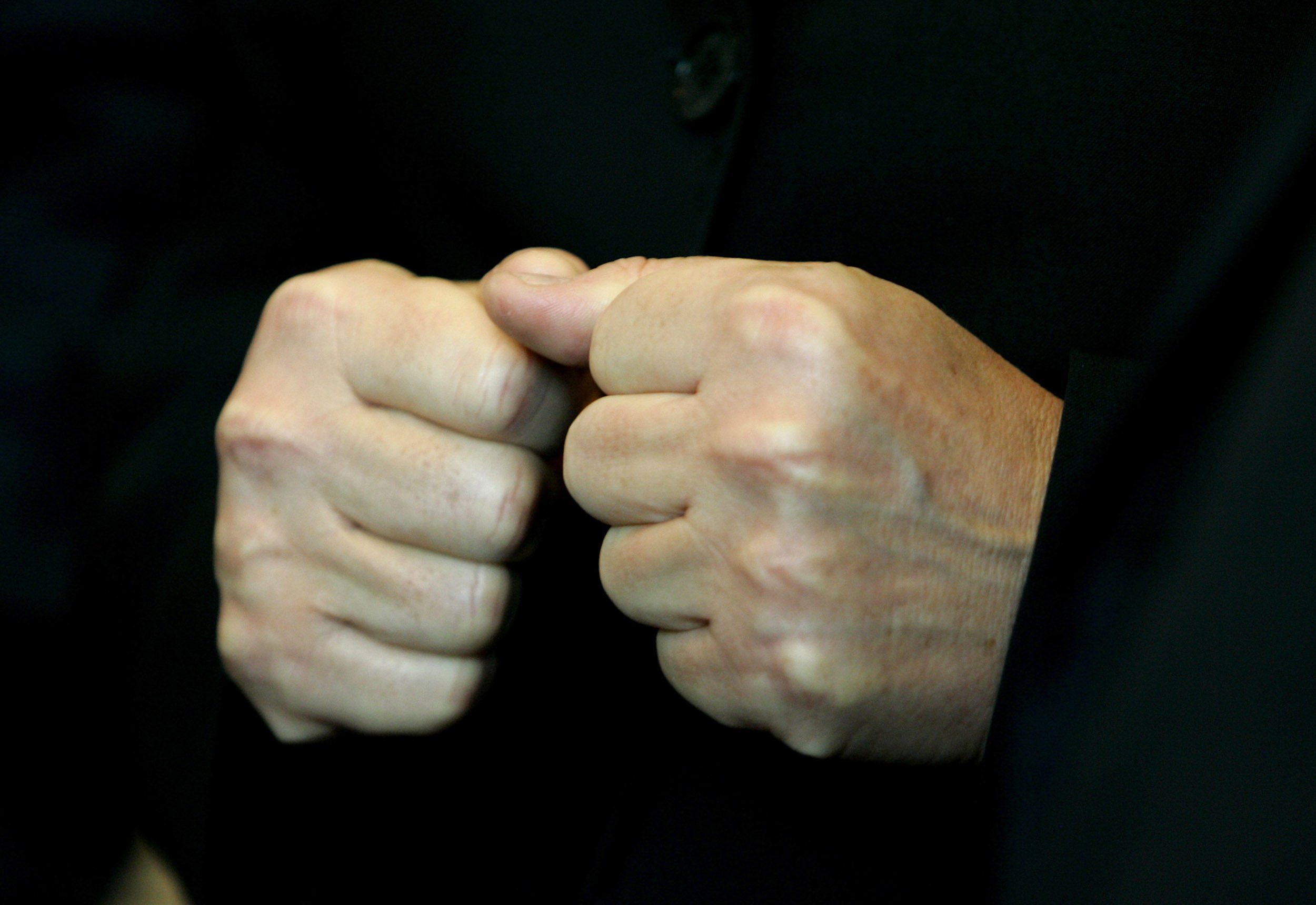
The bar brawl you witnessed the other night is rooted in evolution, according to a new study that used cadaver arms to test the theory that the human hand changed over time, not just for manual dexterity but for physical defense—and, by extension, sexual selection.
Humans have shorter palms and longer, more agile fingers and flexible thumbs, compared with other primates and apes. But researchers at the University of Utah wanted to understand how this hand composition makes for a more efficient punch.
"The human hand presents a biomechanical paradox. It is critical to most human behaviors: foraging for, preparing and ingesting food; crafting and using tools; building shelter; playing musical instruments; producing art; communicating complex intentions and emotions; and nurturing," the researchers write in their study. "Yet, the hand is also our most important anatomical weapon, used as a club to threaten, beat and sometimes kill other humans."
Using the arms of dead men, the researchers demonstrated their theory that a closed human fist creates the most efficiently protected and powerful weapon, compared with a flat and open-palmed hand or loosely closed fist. The study's strange methodology was used to ensure that a bunch of living men didn't end up at their local emergency room.
The eight arms were not embalmed and were kept frozen until the experiment. There was, in fact, a ninth arm, but it was found to be too arthritic to punch effectively. The arms were placed in an apparatus that allowed them to swing toward and punch dumbbells. The researchers tried a few positions: a buttressed fist, in which the thumb tightly wrapped around the index and middle finger; a hand loosely closed, with the thumb facing outward; and an open hand well suited for a slap across the face. They secured the hands with fishing line and measured hand stretching and compression by attaching strain gauges to the metacarpal bones.

The researchers found that hands that were protected with a clenched or buttressed fist were able to safely strike with 55 percent more force, compared with an unprotected fist. Additionally, a punch with a fist provided twofold more force than one given with an open hand.
"Because male-male physical competition is important in the mating systems of most species of great apes, including humans, we tested the hypothesis that a clenched fist protects the metacarpal bones from injury by reducing the level of strain during striking," the researchers write in their study. "A fully clenched fist does appear to provide significant protection to the metacarpal bones when the hand is used to strike."
The study, published Wednesday in the Journal of Experimental Biology, does point out that there were likely other factors that contributed to evolutionary changes in hand proportions. These may include genetic drift, the lasting impact in a gene pool that happens by chance when certain populations reproduce more or less, making certain traits more or less common in the entire gene pool. Hand proportion differences may also be due overall adaptations in evolution that altered human feet for walking and standing upright.
The authors also have another theory: The face evolved to resist the harsh blows. Brian Switek, a blogger at National Geographic, has called the research "bro science." He has pointed out that the theory has some holes. One is the nose, which protrudes from the face and is relatively delicate feature that will easily break under the force of the fist. But David Carrier, senior author of the paper, says great apes and australopiths (a hominid genus that lived some 4 million years ago and shared many traits common to both humans and apes) had flat noses and that indicates this was an evolutionary development.
A previous study by Carrier looked at the composition of facial bones of australopiths and found their bones were strongest around the jaw, where they're most likely to have suffered a blow in a fight.
Uncommon Knowledge
Newsweek is committed to challenging conventional wisdom and finding connections in the search for common ground.
Newsweek is committed to challenging conventional wisdom and finding connections in the search for common ground.
About the writer
Jessica Firger is a staff writer at Newsweek, where she covers all things health. She previously worked as a health editor ... Read more
To read how Newsweek uses AI as a newsroom tool, Click here.








